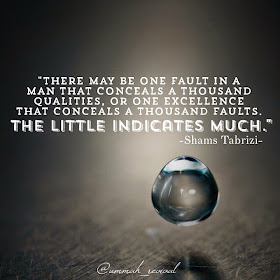Second Dimension
The liberation of the Muslim states from the yoke of
Western Colonialism was only the first stage in the ongoing process of Islamic
revival. We now turn to the second dimension of this process, which is the role
of traditional and orthodox religious scholars or Ulama. Numerous organizations
of these Ulama, belonging to various schools of thought, are actively pursuing
the mission of serving Islam and Muslims along the lines of their own
particular methodology. In this respect too, the Indian subcontinent enjoys an
outstanding and unparalleled superiority in that the grip of the Ulama over the
masses and the popular support for the orthodox Islam in this part of the world
is unmatched in the entire Muslim Land. Even the Arabian peninsula, which was
dominated by the effects of the reformist movement of Muhammad Ibn Abdul Wahhab
(1703-1792) up to the middle of the present century, is now too far behind the
Indian subcontinent in this regard.
The reason for this phenomenon is not at all difficult to discern. A versatile and unique figure like Shah Waliyullah of Delhi (1703-1762) is not to be found anywhere else in the Muslim world during the last three hundred years. His momentous efforts in shifting the focus of Muslims away from trivial legalities and back to the original sources of Islamic faith and knowledge — the Holy Qur’an and the Hadith — as well as his intellectual exposition of Islamic thought and philosophy are certainly unparalleled achievements. It was Shah Waliyullah’s pioneering work that had led to the enhancement of the respect for religion and religious scholars in the Indian subcontinent.
However, we must keep in mind that the main thrust of the efforts of our Ulama is directed only towards safeguarding and preserving the dogmatic, ritualistic, and institutional structure of Islam. As regards fulfilling the requirements and demands of reviving Islam in the present Westernized milieu, and re-establishing the ascendancy of the politico-socio-economic system of Islam, they are often unaware of even the existence of such a need. Therefore, the services of the Ulama can be seen as a continuation of the efforts of previous reformers of Islam, in that their efforts — like the services of present-day Ulama — were mainly focused on defense rather than on revival.
Our noble ancestors were justified in narrowing down their fields of activity because the cultural and legal system of Islam was still very much intact in those days, and the predominant need of their time was merely to preserve the religious faith in its original form and to defend it against alien influences. As a result, all our past reformers concentrated their energies in the academic fields, or, at the most, in the moral and spiritual purification of common Muslims. None of them tried to launch any organized political or militant movement, as Prophet Muhammad (SAW) had set strict restrictions on such a rebellion against Muslim rulers.
According to the popular interpretation of some Ahadith, as long as the Shari‘ah was being enforced and no flagrant violation of Islam was being committed, it was not considered permissible to revolt even if the rulers are themselves wicked and oppressive. Therefore, as soon as the situation changed, and non-Muslims started to conquer and occupy Muslim territories, the reformist efforts quickly turned into armed struggles. Prominent examples of this phenomenon include the MujahiDeen movement of Sayyid Ahmed Shaheed (1786-1831) in India, the Sanussi movement in Libya — started by Sayyid Muhammad Ibn Ali As-Sanussi (1787-1859) — and its struggle against Italian occupation up to 1932, and the Mahdist movement — initiated by Muhammad Ahmad (1844-1885) — that resisted the British invasion in Sudan. ******



No comments:
Post a Comment